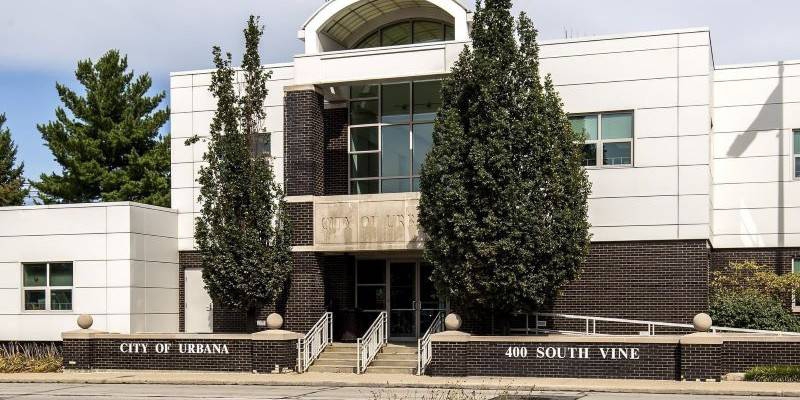Reported crime in Urbana during 2022 and 2023 was the lowest it’s been for ten years, but you wouldn’t have known it from the recently proposed more than $4 million increase in Urbana’s police budget for 2025. Leading up to the final budget vote this past Monday, the City of Urbana had initially proposed the largest year-to-year budget increase for policing ever.
The City’s justification came mostly from BerryDunn, the outside consulting firm paid $230,000 to review alternative safety models. At the time of the vote, BerryDunn has still only evaluated police staffing and not done any evaluation of alternative response models. BerryDunn’s own review of Urbana Police Department (UPD) showed over two-thirds of calls were non-criminal complaints, showing a huge potential for alternatives.
The half-finished BerryDunn report called UPD and the City to collaborate with the community. Most Urbana groups who work in the community spoke out almost unanimously against the proposed budget. The City and UPD were rushing a budget increase without community involvement, and it was undermining the very thing Urbana needs to improve public safety: trust between the community, UPD, and the City.

The unsustainable budget included a three-year pilot police substation on Philo Road for community engagement. Many Urbana residents rightfully asked: Why do we need a second police station in Urbana only two miles from the one we already have? At the final vote, staff from The Well Experience, located on Philo Road, gave a presentation with perspectives from Urbana youth who were also clearly against the idea of a targeted police presence in their neighborhood. For many communities, the trauma and legacies of overpolicing are the reason why people in Urbana have been asking for alternatives for years.
There are people in Urbana who want a police officer during their emergency, and there are people in Urbana who do not want a police officer during their emergency. Both groups should have access to the resources they need, and we shouldn’t force policing solutions on communities that don’t want it. Overpolicing is why America is the most incarcerated country on the planet.
Urbana’s poverty rate is more than double the Illinois average. Housing insecurity in Urbana is increasing, for adults and children. Our community expects UPD to handle the crisis of homelessness, rather than adequately fund housing.
The issues of housing were brought up by members of the community. According to Danielle Chynoweth, Supervisor for Cunningham Township, “$100,00 would put every known homeless resident we work with in housing during the hottest and coldest four months of the year. $240,000 literally ended homelessness for families in Urbana.”
“The City Council should consider not investing more money for more Police Officers where the crime has gone down,” said Tammy Little, a housing coordinator for First Followers. “I am bombarded with calls on a daily basis for individuals needing immediate assistance, the so-called ‘shelters’ are at or beyond capacity. The City Council should seriously consider housing programs to assist those in need.”
We don’t even need to reinvent the wheel. There are many programs leading the way. The CAHOOTS program in Oregon uses trained social workers to handle mental health crises, medical emergencies, addiction services, and more. In many cases, community members request CAHOOTS workers because they’re better trained for their crisis and only require police assistance 1% of the time.

In the end, the City Council agreed to reduce the number of new police hires. But this almost certainly would not have happened without a massive community organizing effort. Over six months Urbana groups held three public townhalls, collected over 600 petition signatures, met with city leaders, and organized a huge public input at council meetings. Council members Grace Wilkens, Jaya Kolisetty, and Chris Evans were crucial votes pushing to scale back the massive police budget, and the final budget would’ve looked very different without the huge turnout by the community.
The final budget included $450,000 for Urbana’s alternative response model and plans to set up an Alternative Response Task Force made up of community members. While these numbers still pale in comparison to the more than $13 million annual budget for UPD, the compromise by the City is a step in the right direction. We hope the City doesn’t continue to drag its feet in putting this model in place. The community has been asking for this model since 2020.
You can learn more about the issue and future work at the Independent Media Center’s petition fact sheet. We encourage you to reach out to City Council with additional input, and to join the community organizing around this issue. Community only happens when people show up.
Bryan Maxwell is a member of Prairie Liberation Center and Urbana resident.








